As strong winds swept across the steppe, vast herds of grazing animals can be seen dotting the landscape. It would be easy to mistake the scene as something out of Africa. After all, rhinos, elephants, big cats, and antelopes can be seen in the distance. But this is not Africa, the vast landscape stretching before us is the Eurasian steppe during the last ice age.
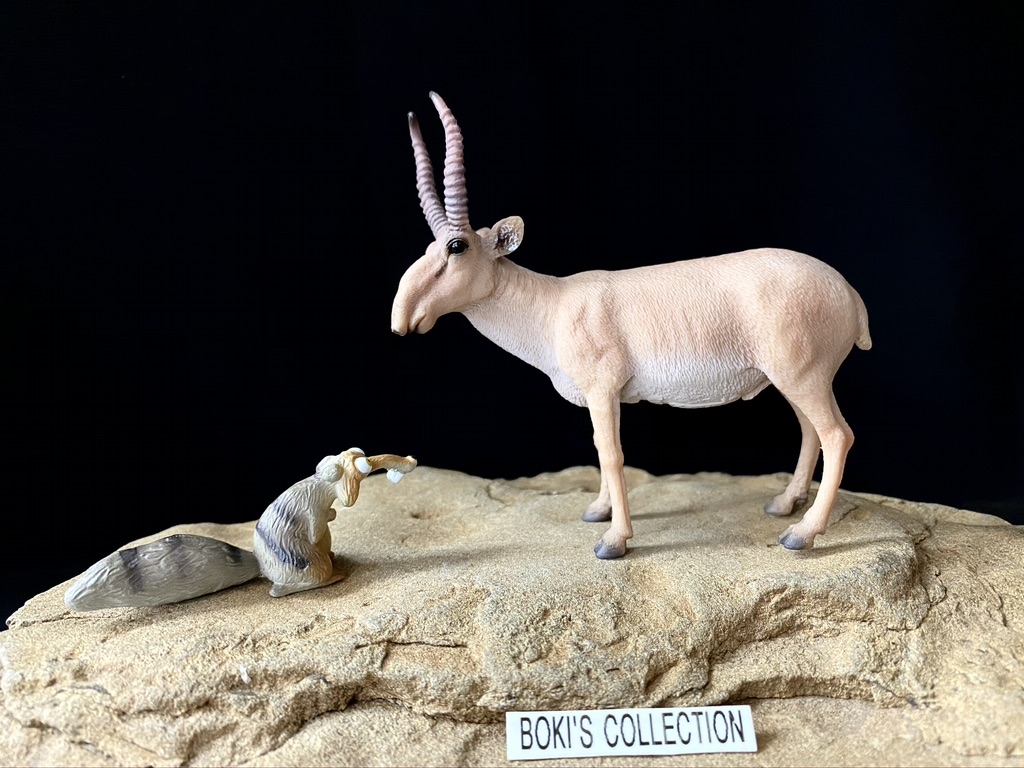
Although many of the animals, especially the megafauna that once inhabited this landscape are now gone, one of them is still with us today; the saiga antelope (Saiga tatarica).
Saiga antelope has always been one of the species I have been hoping to see in toy form for a very long time. CollectA answered this prayer and finally produced one back in 2017. CollectA have proven to be the leader when it came to producing amazing and often obscure ungulates, so it is just fitting that they would be the one to who would produce the first beautiful figure of this enigmatic animal.
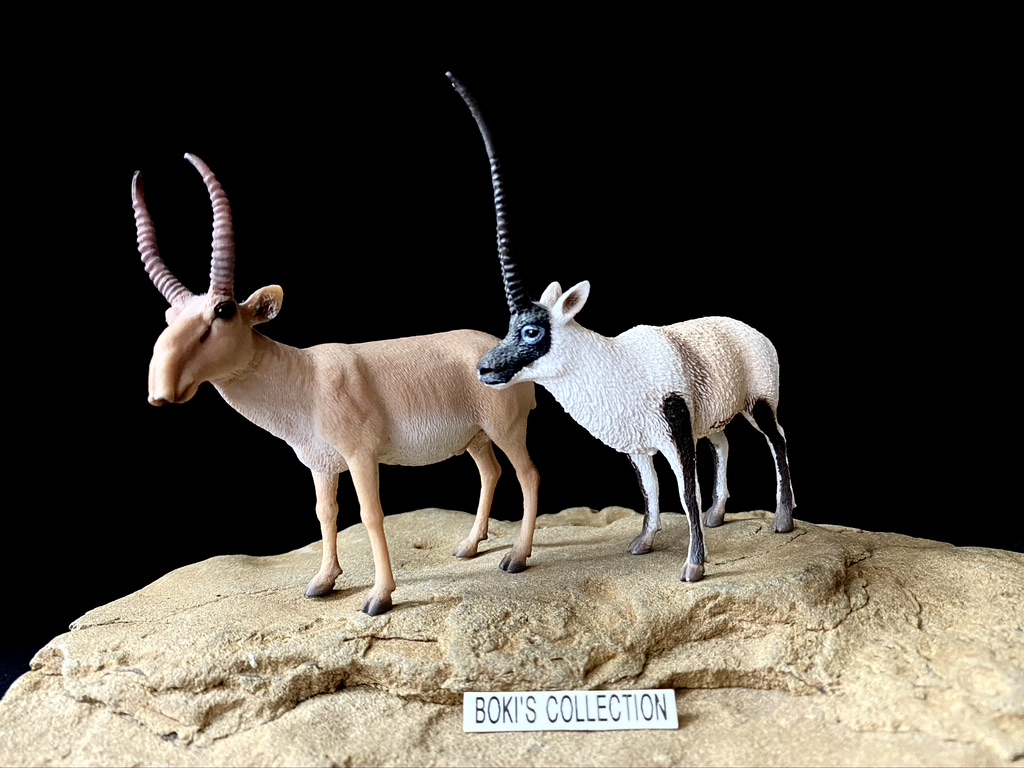
The most unique feature of the saiga is its nose, they are so uniquely shaped that you can’t mistake it for any other animal. The nose is huge and bulbous and point downwards almost like a tapir’s trunk. It is believed that this unusual nose shape is an adaptation to its harsh environment, specifically the cold and dust storms. The large nose function both as a filter and a heater/cooler depending on the season.
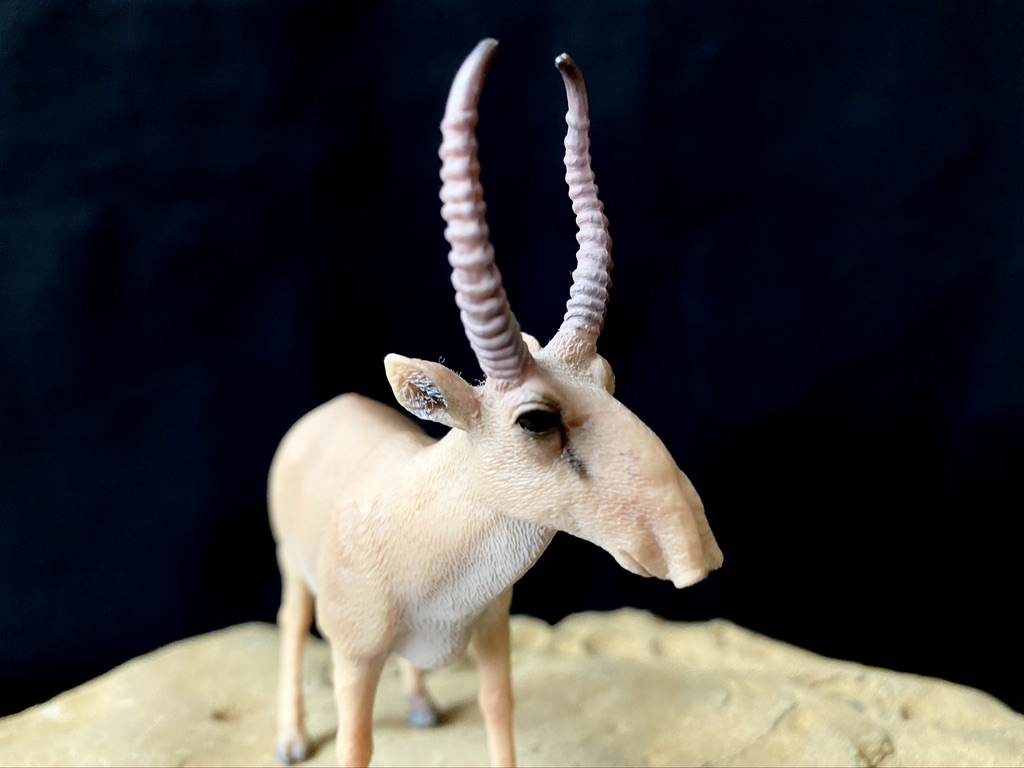
During the dry hot months when dust clouds are common and temperature soar, the nose act as a filter, preventing the animal from inhaling dust particles that could choke the air. It also helps cool the animals’ blood during extreme heat.In the cold months, the nose act as a heater, warming up the cold air before it reaches the lungs.
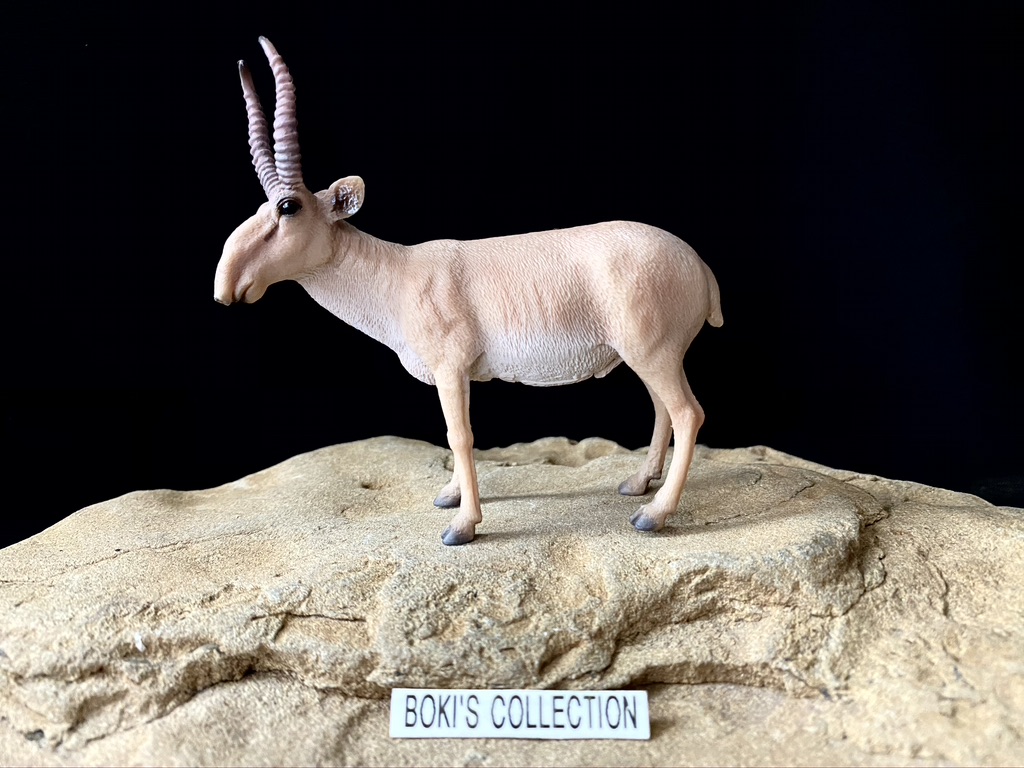
CollectA did a really good job in sculpting this distinctive nose. The captured the weird and long pair of nostrils, it may look a little conservative, but this is perhaps due to the nose not fully inflated or flared. You can see some ridges as well as short hairs sculpted on the nostrils. The snout captures that distinctive hump-like seen in the animal with nice musculature that clearly defines the odd shape of the animal’s head.

The large eyes are spot on and really captures that forlorn look that the animal has, and the black tear stain is painted nicely. The ears are long and coupled with the large nose and snout, it makes the head looks big.
The saiga exhibits sexual dimorphism in that only the males possess horns; females and young males don’t have horns. This is clearly a male since it has a pair of impressive horns (or just look underneath!). The horns point upwards and show ridges or rings and is not very long when compared to other antelopes. The horns also have a light brown color that looks translucent.

The horns could be an Achilles’ heels for the saiga. They are hunted for their valuable horns in big and unsustainable numbers. Like rhino horns, many believed that saiga horns have medicinal properties (they don’t) and there was even a time when the world-wide rhino population was so low that saiga horns were promoted as an “alternative” to it with devastating consequences.

The main body hair color is sandy brown, on the figure you can see delicate details that suggest short hairs. Saigas display seasonal changes in coat colors. In the summer months, the color is mostly a light sandy brown, while in winter it turns to a darker grayish-brown. They are also known to molt some of their longer winter coat at the end of the season.
Saigas are medium size animals with a weird proportion that typical reach a height of around 24″-32″ inches tall at the shoulders and weighing in around 150 lbs. The figure measures 3.5 inches tall up to the tip of the horns and 3.5” inches long. The body is stocky and proportionally, the legs look short. CollectA accurately captured these features.
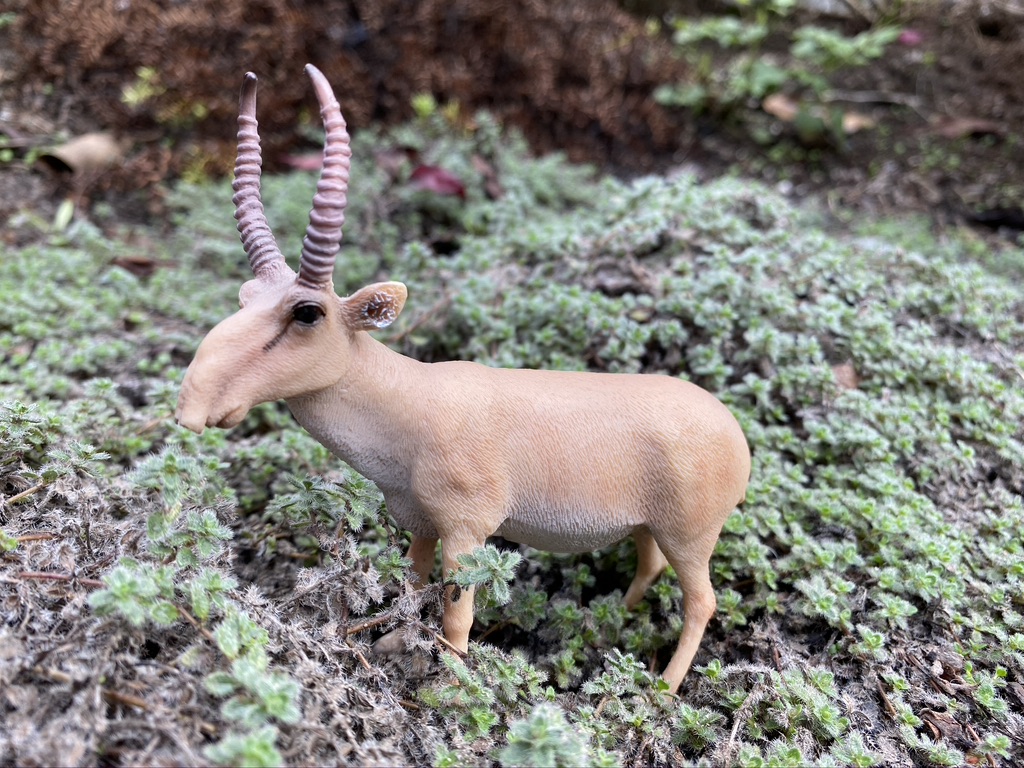
Saigas form large herds and are migratory and are known to swim across rivers to reach their destination. Saigas are often found in semi-desert, steppes, and grassland, and occasionally venturing into woodlands.Besides humans and the now extinct mega predators of the ice age, the main enemy of saigas are wolves, although jackals and large eagles would sometimes take down young animals.

This odd-looking animal has changed little since prehistoric times and would not be out of place in both extant and prehistoric collections. Unlike many of the Ice Age animals it once lived side-by-side with that are now extinct, it managed to survive although in a much-reduced number and their range more restricted.

In prehistoric times it had a wider range, occurring in much of Europe, the Americas, and Asia. Today it is categorized as critically endangered species and no longer found in much of its historical range, with populations today concentrated mostly in Russia, parts of Kazakhstan, and a small population in Mongolia hanging precariously.

Human hunting, disease, and habitat fragmentation all contributed to its rapid and alarming decline. The threat of global warming also could have a devastating effect on the remaining herd.Human hunting caused its extinction in many of its historical range.
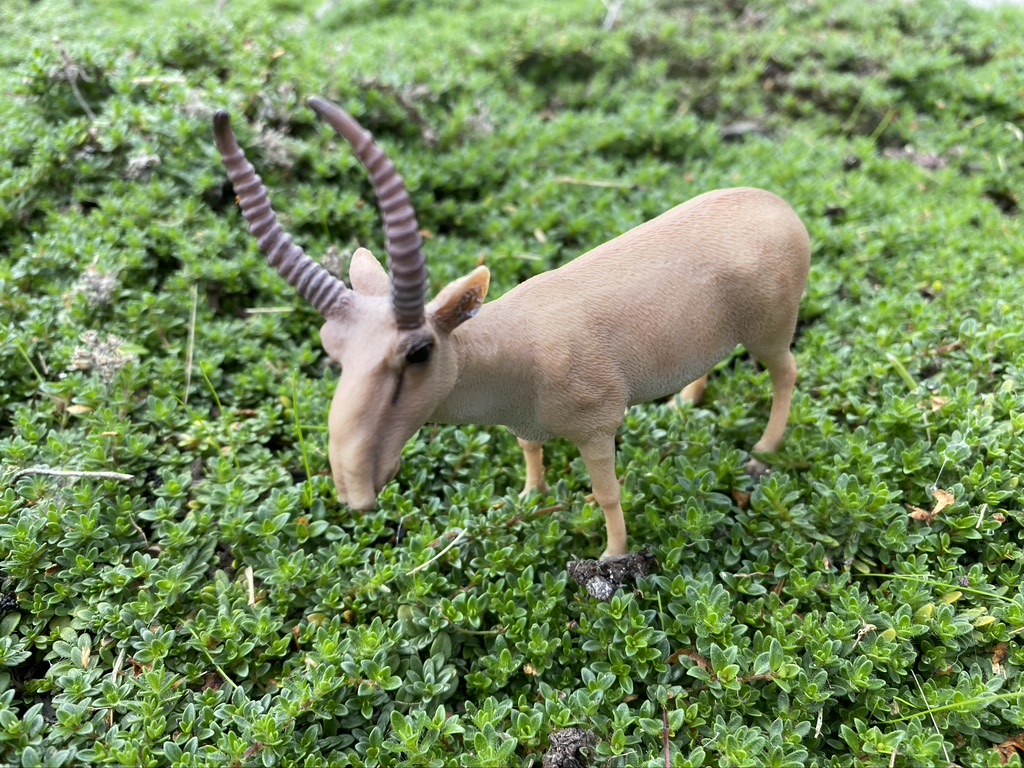
Although they inhabit some of the harshest places on earth, saigas are not good candidate for captivity. There are very few saigas in captivity, so any attempt to conserve them must be done in situ.
This figure is truly one of the most unique antelope to come along. It is very well done and accurately captured the essence of this magnificent and enigmatic animal. It’s a must-have for any collection, both extant and prehistoric and would display nicely on either.
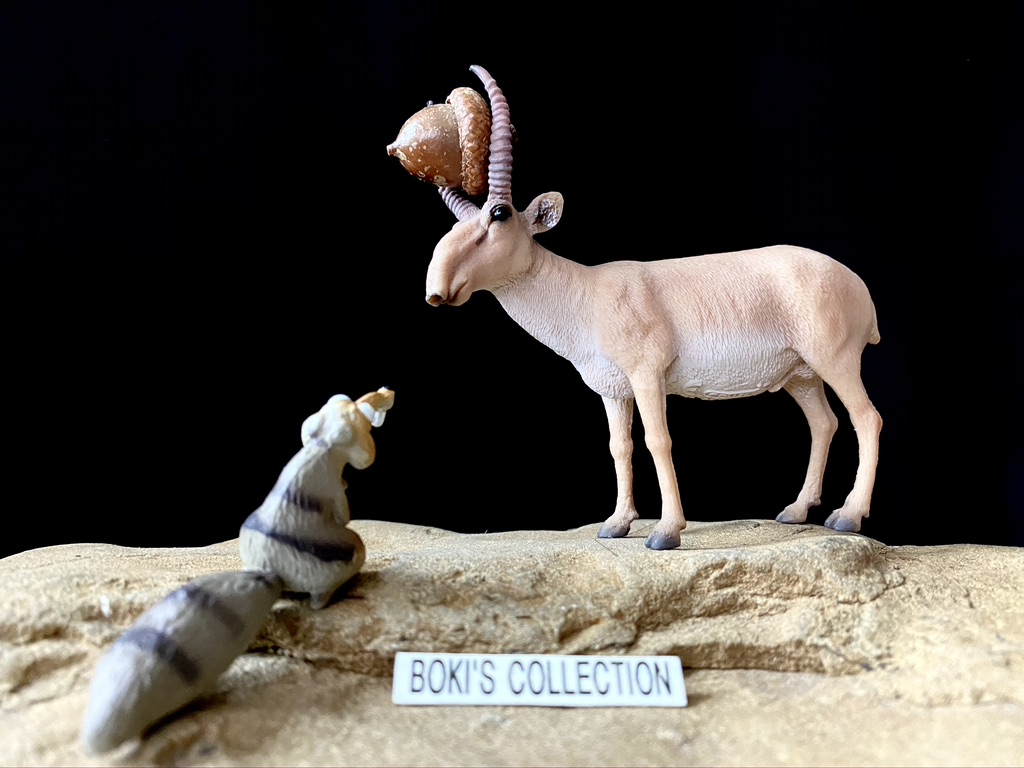
I hope you enjoyed today’s review of this beautiful figure. Until the next review, stay safe and healthy. Cheers!
Disclaimer: links to Ebay and Amazon on the AnimalToyBlog are affiliate links, so we make a small commission if you use them. Thanks for supporting us!



